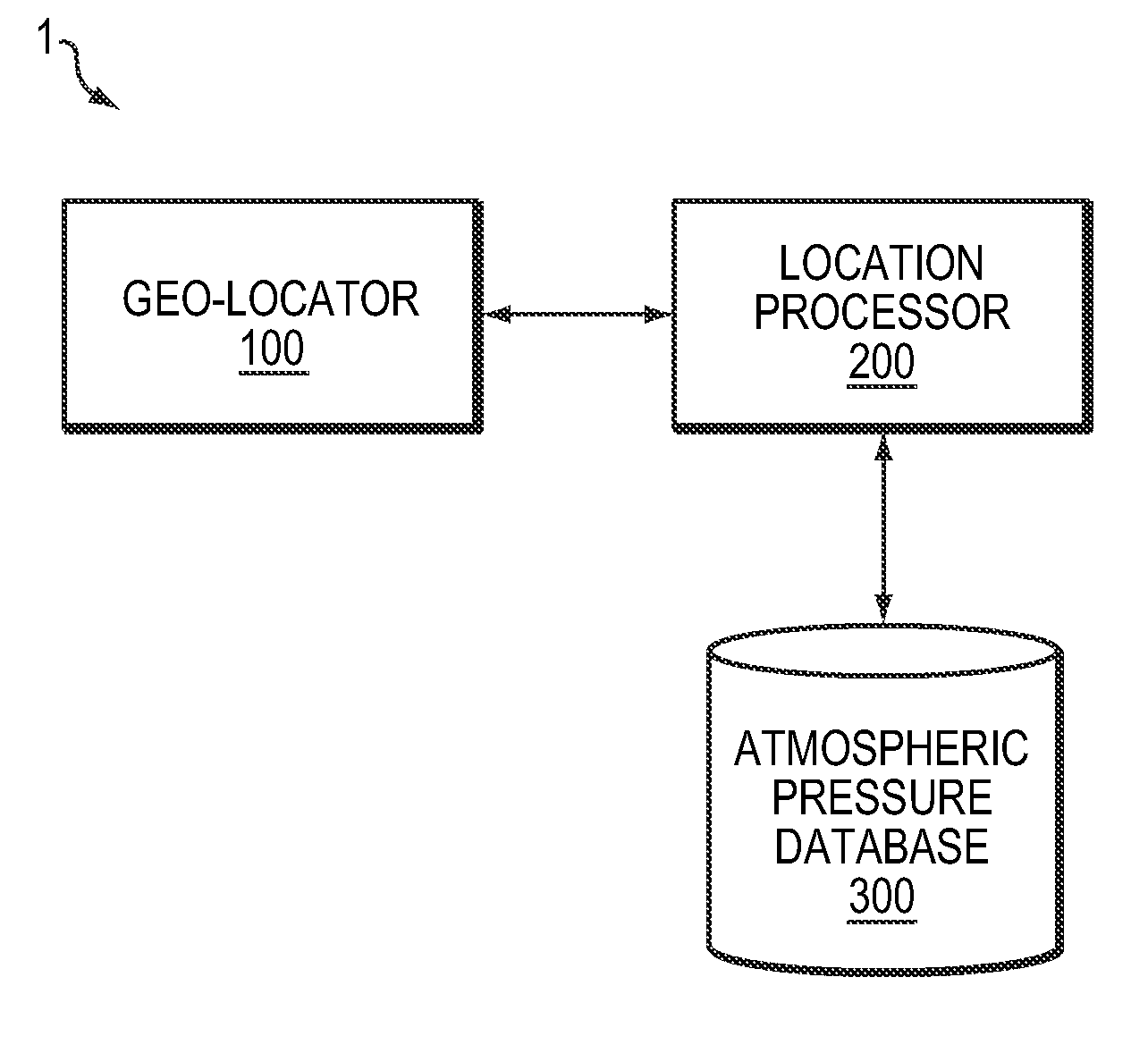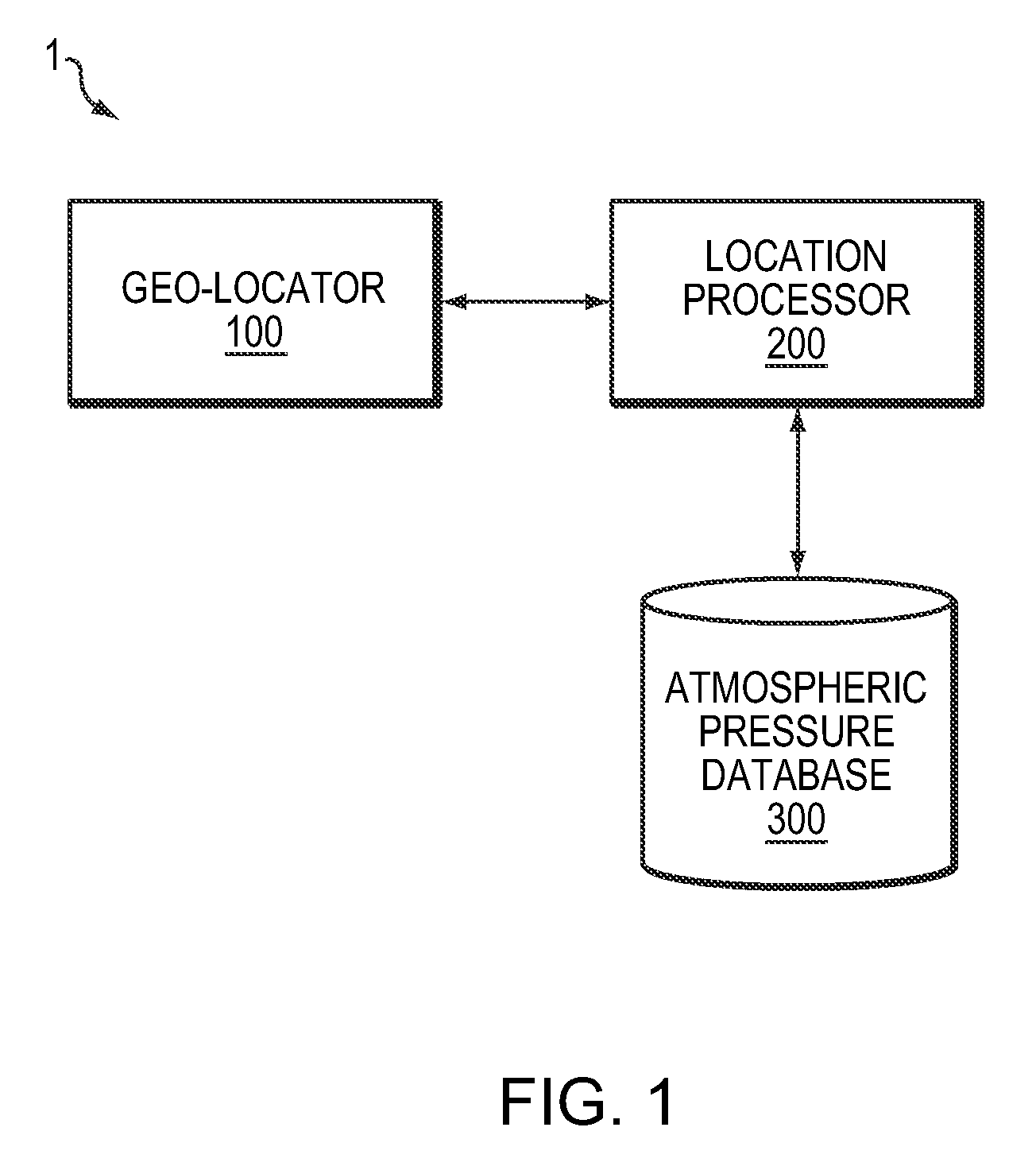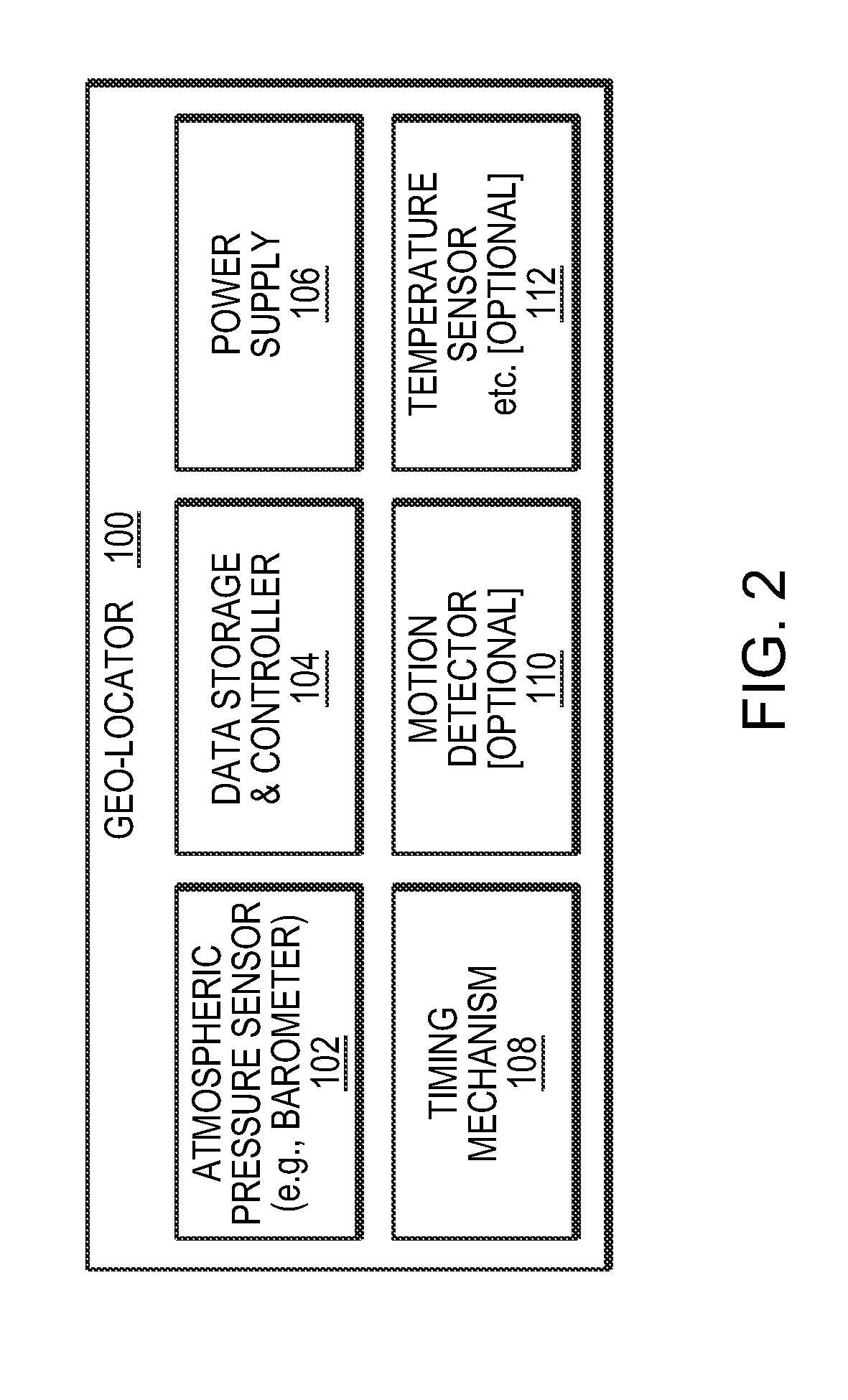Geo-location systems and methods based on atmospheric pressure measurement
- Summary
- Abstract
- Description
- Claims
- Application Information
AI Technical Summary
Benefits of technology
Problems solved by technology
Method used
Image
Examples
Embodiment Construction
Overview
[0035]In brief overview, embodiments of the present invention provide the capability to geo-locate a geo-location device (such as a tag) using barometric pressure. Tracking a device according to ambient atmospheric pressure of a device may be accomplished due to significant pressure gradients over time and space. Embodiments use databases of historical pressure measurements over time and over fixed Earth-based grids and correlate those databases to pressure measurement read by a device with a pressure sensor to track the device.
[0036]The ambient pressure is low bandwidth data, sufficient to localize a geo-location device within kilometers or closer to its actual location. This approach enables geo-location in RF-denied environments, requires minimal power consumption, minimal memory, and minimal data volume, and does not require an antenna. The geo-location techniques described herein work without requiring reception of external radio-navigational signals such as GPS. In add...
PUM
 Login to View More
Login to View More Abstract
Description
Claims
Application Information
 Login to View More
Login to View More - R&D
- Intellectual Property
- Life Sciences
- Materials
- Tech Scout
- Unparalleled Data Quality
- Higher Quality Content
- 60% Fewer Hallucinations
Browse by: Latest US Patents, China's latest patents, Technical Efficacy Thesaurus, Application Domain, Technology Topic, Popular Technical Reports.
© 2025 PatSnap. All rights reserved.Legal|Privacy policy|Modern Slavery Act Transparency Statement|Sitemap|About US| Contact US: help@patsnap.com



